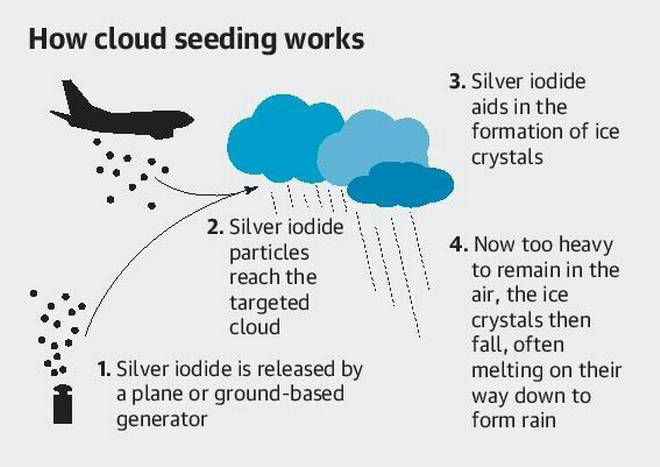Cloud Seeding: What It Is and How It Can Impact Humans
Cloud seeding is a process that has been used for decades to increase precipitation in areas that receive little to no rainfall. It involves the injection of certain chemicals into the clouds, which then causes the formation of ice crystals or raindrops. While cloud seeding has been shown to be effective in some cases, there are also concerns about its potential impact on human health and the environment.
How Does Cloud Seeding Work?
Cloud seeding is typically done by using an airplane or ground-based generator to release chemicals into the air. The most commonly used chemicals for cloud seeding are silver iodide, potassium iodide, and calcium chloride. These chemicals are released into the clouds, where they attract water molecules and cause the formation of ice crystals or raindrops.
Once the ice crystals or raindrops are formed, they fall to the ground as precipitation. This process can be especially useful in areas where rainfall is scarce or during periods of drought.
Potential Impacts on Human Health
While cloud seeding has been shown to be effective in increasing precipitation, there are also concerns about its potential impact on human health. One of the main concerns is the release of chemicals into the air, which can have negative effects on air quality.
Silver iodide, for example, has been shown to be toxic to aquatic life and can accumulate in the tissues of fish. It is also considered a potential carcinogen by the International Agency for Research on Cancer. In addition, potassium iodide can cause irritation to the eyes, nose, and throat when inhaled.
There are also concerns about the potential impact of cloud seeding on the ozone layer. The release of chemicals into the air can contribute to the depletion of the ozone layer, which can have serious consequences for human health.
Environmental Concerns
In addition to the potential impacts on human health, there are also environmental concerns associated with cloud seeding. One of the main concerns is the potential for unintended consequences. For example, cloud seeding could cause unintended changes to weather patterns, leading to flooding or other extreme weather events.
There are also concerns about the impact of cloud seeding on ecosystems. The release of chemicals into the air can have negative effects on plants and animals, and can contribute to the destruction of habitats.
Conclusion
Cloud seeding is a process that has been used for decades to increase precipitation in areas that receive little to no rainfall. While it has been shown to be effective in some cases, there are also concerns about its potential impact on human health and the environment.
Before implementing cloud seeding, it is important to consider the potential risks and benefits. It is also important to carefully monitor the effects of cloud seeding on the environment and human health, and to take steps to mitigate any negative impacts.




Comments
Post a Comment